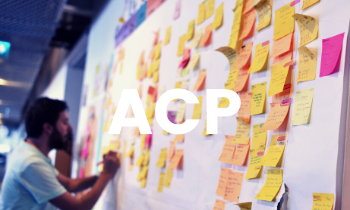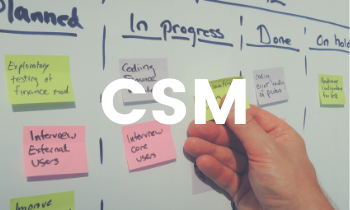Agile Project Management and All of its Benefits
Most organizations in Sri Lanka have been Agile for quite a long time now and it would be helpful to stay informed on how it helps organizations, teams, and products. This article will describe the five main benefits of Agile project management, beginning with a brief introduction on the methodology behind Agile.
What is Agile methodology or Agile project management?
As a whole, when we talk about the Agile method, it implies an iterative and incremental method of management. Its focus is on assisting teams in an evolving landscape and maintaining an emphasis on the rapid delivery of business value. The methodologies used in Agile project management (Scrum, XP, Kanban, and others) all follow the Agile Manifesto, which is based on continuous improvement, flexibility, input of the team, and delivery of high quality results.
Traditional development vs. Agile methodology
Before listing the benefits of agile project management, it would be useful to compare the traditional & the agile development. In software development, we often speak of the “traditional model” which refers to the Waterfall Model. This is notably different from the Agile method, especially because it’s not iterative. Waterfall is more of a process where you can see progress “flowing” through different phases. In fact, it’s a sequential model usually going from requirement analysis, design, implementation, testing and maintenance. The difference also lies in the value proposition of both methodologies and how agile development tends to deliver visibility, adaptability and value in the beginning of the process and reduces most of the risks during the project.
Agile methodologies appeal and cater to all of the customer’s needs. During an entire cycle, user involvement is encouraged, providing visibility & transparency, and showing the project’s actual progress. As mentioned earlier, the Agile method is all about iterative planning, making it very easy to adapt when some requirements change (working in the software development industry, one soon becomes familiar with just how much they can change). The fact that there is unceasing preparation and feedback through this process means that we can start delivering business value right from the very beginning of the project. Delivering business value earlier on in this process makes it easier to lower the many risks associated with development.
Now we can begin to cover the main benefits of agile project management, point by point.
The Five Benefits of Agile Project Management
1. A product of high quality
In Agile development, incorporating testing during the cycle means that there are regular checkups to ensure that the product is operational during the development. This enables the product owner to make any necessary changes and the team can be made aware if there are any issues.
Describing and explaining requirements just in time so that the knowledge of the product features is as relevant as possible.
Incorporating continuous integration and daily testing into the development process, allowing the development team to address issues while they are still fresh.
Utilizing any programmed testing tools
Allowing the scrum team to repeatedly improve on processes and work by conducting sprint retrospectives.
Completing work ensuring it is developed, tested, integrated, and documented.
Software developed in iterative, rapid cycles. This results in small incremental releases with each release building on previous functionality. Software quality maintained by thoroughly testing each release.
2. Increased satisfaction in customers
With the product owner constantly involved, the progress of development has high visibility and flexibility to change stays highly important. This implies engagement and customer satisfaction.
Working functionalities demonstrated to customers in every sprint review.
With every release, product delivery to market is quicker and more often. The clients get early access to the product during the life cycle.
Customer involvement kept consistent throughout projects.
3. Increased control in project
Sprint meetings.
Ensured transparency.
Jira usage (visibility of each step of the project for both parties).
4. Risk reduction
The chances of absolute project failure virtually eliminated by the use of agile methodologies.
Continuously having a working product, starting with the very first sprint, so that no agile project fails in its entirety.
Developing in sprints, ensuring a shorter duration of time between initial project investment and either failing fast or knowing that a product or an approach will work.
Allowing organizations to pay for a project with little up-front expense by generating revenue early with other self-funding projects.
Agile allows total freedom for implementing new changes. This can happen at very little cost because of the frequency of producing new increments.
The client’s needs and preferences are adapted to through the development process. Agile commonly uses user stories with business-focused acceptance criteria to define product features. By focusing features on the needs of real customers, each feature incrementally delivers value, not just an IT component. After each iteration, this opens up an opportunity to beta test software. Gaining valuable feedback early on in the project, it becomes possible to make changes when needed.
5. Faster ROI
The iterative nature of Agile development means that the features are delivered incrementally, causing benefits to be realized early on while the product is still in the development process.
Development commences early.
The product is functional and “ready to market” after just a few iterations.
First Mover Advantage.
Extended delivery cycles are often an issue for businesses, namely those in fast-moving markets.
Agile entails fast product releases and the ability to gauge customer reaction. Altering the product accordingly keeps you ahead of the competition.
A business value focus. By permitting the client to determine a hierarchy of importance for features, the team understands what is most important to the client’s organization, and can deliver features in order of importance
Conclusion
According to certain statistics, we can conclude that by using agile project management the time to market is 37% faster. This increases the efficiency of your team with a productivity that is 16% higher than the average.
Agile Project Management is booming in Sri Lanka since people understand the benefits. To learn more about this subject you can follow one of our Agile Project Management courses offered by PMI-USA. Training is conducted by Dr.Duminda Weeraratne who has been a mentor and leader for Agile Project Management in Sri Lanka




